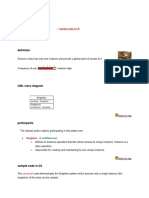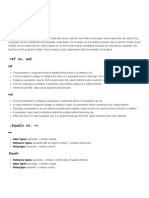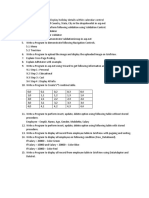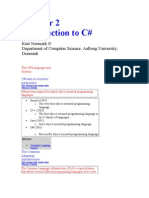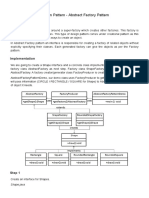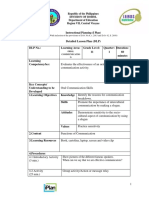0% found this document useful (0 votes)
82 views3 pagesExtension Method: Singleton Design Pattern
The singleton design pattern ensures that a class has only one instance and provides a global point of access to it. It has four key characteristics: 1) a private constructor, 2) the class is sealed, 3) a static variable stores the instance, and 4) a public static method to access the instance. Advantages include memory savings from reusing a single instance and hiding dependencies. Disadvantages are more difficult testing and reduced parallelism. A singleton class can be extended whereas a static class cannot, and a singleton allows initialization with state whereas a static class does not.
Uploaded by
Rajesh VhadlureCopyright
© © All Rights Reserved
We take content rights seriously. If you suspect this is your content, claim it here.
Available Formats
Download as DOCX, PDF, TXT or read online on Scribd
0% found this document useful (0 votes)
82 views3 pagesExtension Method: Singleton Design Pattern
The singleton design pattern ensures that a class has only one instance and provides a global point of access to it. It has four key characteristics: 1) a private constructor, 2) the class is sealed, 3) a static variable stores the instance, and 4) a public static method to access the instance. Advantages include memory savings from reusing a single instance and hiding dependencies. Disadvantages are more difficult testing and reduced parallelism. A singleton class can be extended whereas a static class cannot, and a singleton allows initialization with state whereas a static class does not.
Uploaded by
Rajesh VhadlureCopyright
© © All Rights Reserved
We take content rights seriously. If you suspect this is your content, claim it here.
Available Formats
Download as DOCX, PDF, TXT or read online on Scribd
/ 3





